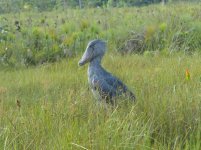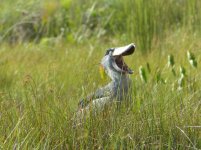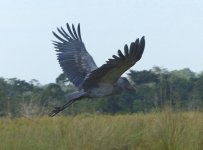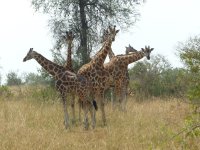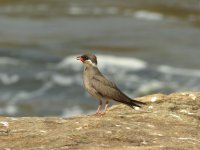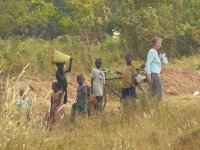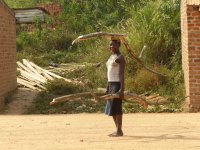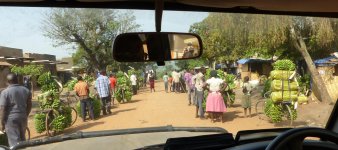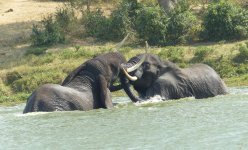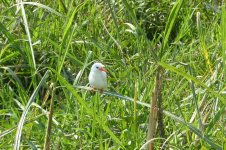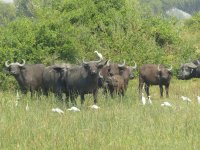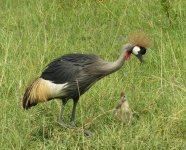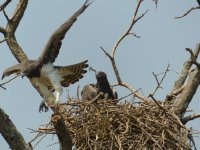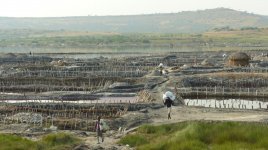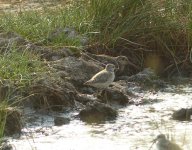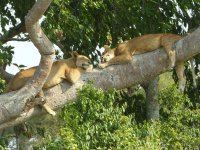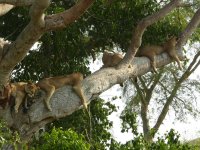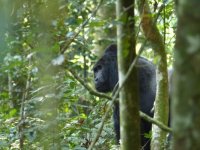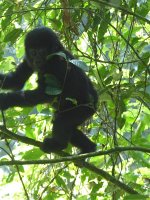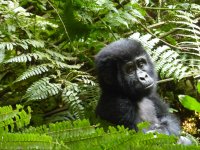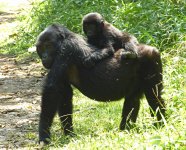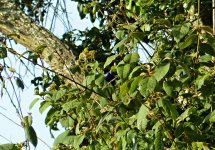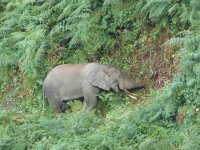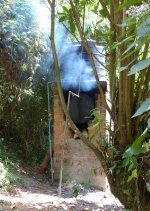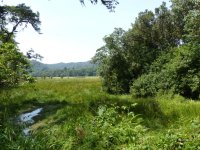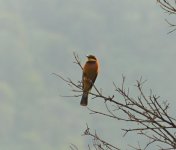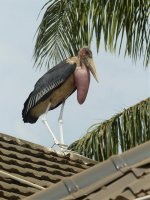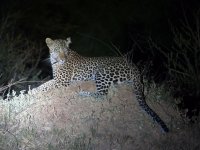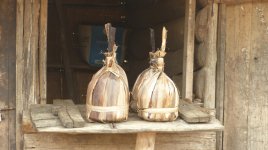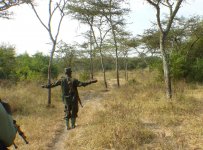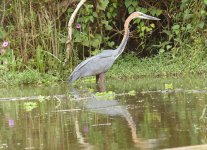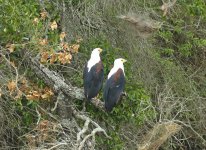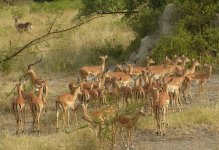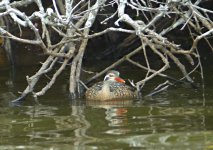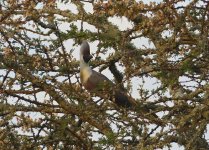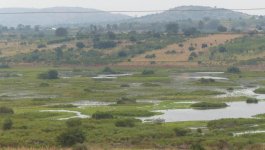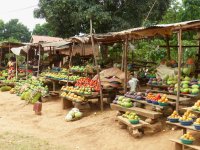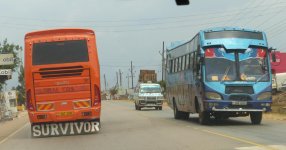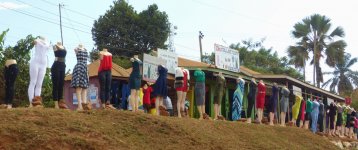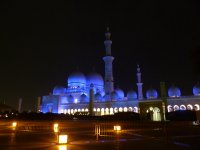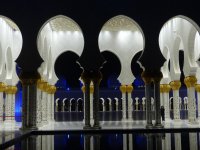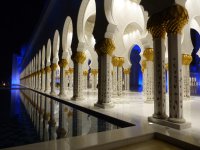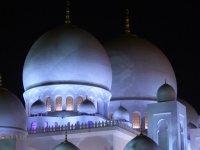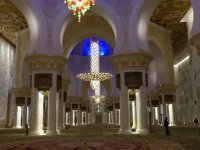
I had outlined the planned tour previously: http://www.birdforum.net/showthread.php?t=332268. It turned out nobody else wanted to join, so it was again a private tour in the end. Except that it did cost us more, this was just great, actually. Though we had originally planned to do the tour as a group of five. But when that fell apart, we decided to do it anyway. And that was clearly a very good decision. 8-P
Our tour guide and organizer was Deogratius Muhumuza of Uganda Eco Tours http://www.ecouganda.com. My brother had visited Uganda in July and he had warmly recommended Deo to us. I can only pass on this recommendation. Deo is both an unbelievably great spotter and a reliable and excellent organizer. The latter became particularly important when we needed a replacement tire shipped from Kampala as we had a flat that ruined one tire beyond repair. Deo had brought along Brian Tuhaise as a driver. But it quickly turned out that Brian was not only an incredibly fine driver (we had never felt as secure on any of our previous trips), but he was as well an excellent spotter in his own right. Actually, the two of them both seemed to have super-natural spotting capabilities, and they complemented each other to the finest. You definitely go for the best if you can book a tour with this incredible duo!
We did not go for maximal species numbers, my priority was to see as many of the species I had on my target list. But we wanted to see birds very well even if that meant missing some others. A maybe somewhat unusual approach among birders. But it's the way both my wife Doris and I can have a great time. It took our guides a bit of getting used to our way of doing things as they mostly lead tours for birders with "ants in their pants" as they called it. Others call them "gung-ho" birders or whatever. Anyway, we specifically omitted two birding hot spots (Semliki and Budongo) to have more time at the other - less neck straining - locations. Nevertheless, at the end of our 16-day tour our bird species total of actually seen birds was over 380, plus a number we only heard. Way more than I actually "needed" to be happy. As I am rather slow at times to spot a bird, that simply shows the superb job both Deo and Brian did to get us to see as many species as possible.
It would actually have been easy to get way over 400 to 430 bird species, but we also wanted to go for and spend some time with "big game" and the Mountain Gorillas. Uganda is actually the only country where all this, including Shoebill, Green Pitta and African Finfoot, can be so easily combined. And Chimpanzees would as well be possible. We had decided against including those as well, speculating that we might see them anyway. But it took us more time to get decent looks at the Green Pitta which had priority.
Our tour guide and organizer was Deogratius Muhumuza of Uganda Eco Tours http://www.ecouganda.com. My brother had visited Uganda in July and he had warmly recommended Deo to us. I can only pass on this recommendation. Deo is both an unbelievably great spotter and a reliable and excellent organizer. The latter became particularly important when we needed a replacement tire shipped from Kampala as we had a flat that ruined one tire beyond repair. Deo had brought along Brian Tuhaise as a driver. But it quickly turned out that Brian was not only an incredibly fine driver (we had never felt as secure on any of our previous trips), but he was as well an excellent spotter in his own right. Actually, the two of them both seemed to have super-natural spotting capabilities, and they complemented each other to the finest. You definitely go for the best if you can book a tour with this incredible duo!
We did not go for maximal species numbers, my priority was to see as many of the species I had on my target list. But we wanted to see birds very well even if that meant missing some others. A maybe somewhat unusual approach among birders. But it's the way both my wife Doris and I can have a great time. It took our guides a bit of getting used to our way of doing things as they mostly lead tours for birders with "ants in their pants" as they called it. Others call them "gung-ho" birders or whatever. Anyway, we specifically omitted two birding hot spots (Semliki and Budongo) to have more time at the other - less neck straining - locations. Nevertheless, at the end of our 16-day tour our bird species total of actually seen birds was over 380, plus a number we only heard. Way more than I actually "needed" to be happy. As I am rather slow at times to spot a bird, that simply shows the superb job both Deo and Brian did to get us to see as many species as possible.
It would actually have been easy to get way over 400 to 430 bird species, but we also wanted to go for and spend some time with "big game" and the Mountain Gorillas. Uganda is actually the only country where all this, including Shoebill, Green Pitta and African Finfoot, can be so easily combined. And Chimpanzees would as well be possible. We had decided against including those as well, speculating that we might see them anyway. But it took us more time to get decent looks at the Green Pitta which had priority.
Last edited:




